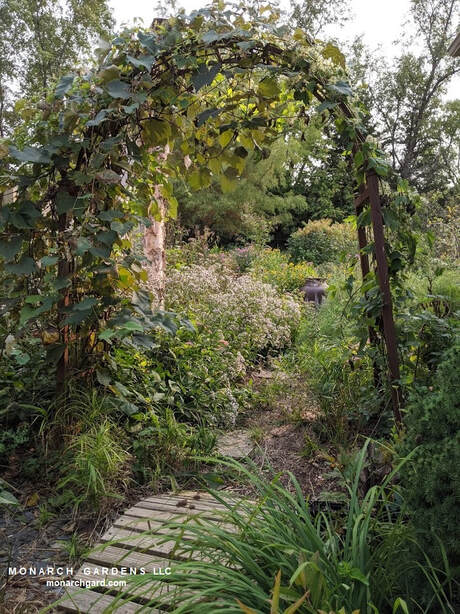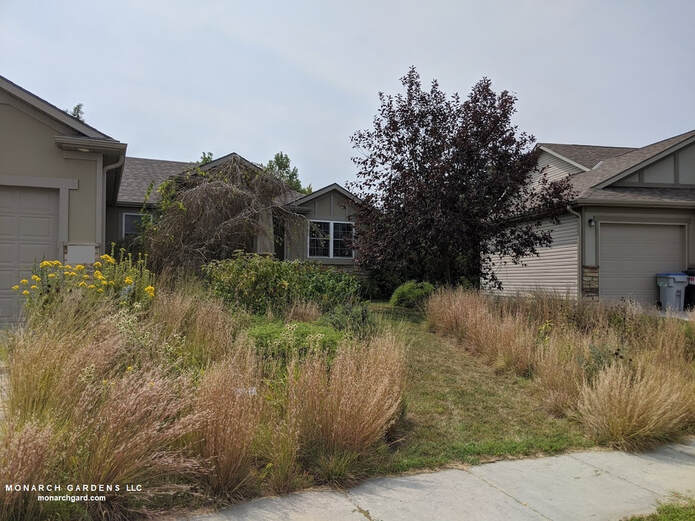I've written before on how plant selection and management is critical, and how gardeners often don't give these things enough research and attention. But if you are in a predicament where you can't start from scratch -- or do a significant makeover -- there are some strategies to employ which show your landscape has purpose, at least to the casual passerby.
Let's explore our garden at HQ, which has had its run ins with the law. And that's ok -- you can't change minds or policies by playing it safe with a monoculture of lawn. So first up, the oldest part of the 1/4 acre suburban lot:
But include those three hardscape features (bridge, arbor, fountain) and something happens -- the garden is shown to have purpose. It is an intentional space. Not only that, but these linear, hard objects give the eye some place to anchor upon, making the plants more legible. It's a simple trick, and while it won't please or convince everyone, it will likely convince those who matter most. Other objects one could use are sculptures, benches, and trellises.
These small strategies can go a long way toward both avoiding and working with weed control. So while your first priority is likely to be removing really tall plants or those that flop over onto sidewalks -- and some that have spread too easily -- your second priority is to include a bench, an arbor, a path, a sign, or a sculpture to show intentional gardening and not just laziness. If we're going to change minds we can't forget that especially in lived, urban areas, there are still de-facto gardening rules -- and playing with them, bending their seeming constraints, can lead to some real creativity, satisfaction, and ecosystem function (wildlife habitat, storm water runoff mitigation, soil stabilization, air cleaning / cooling...). Prairie up.




 RSS Feed
RSS Feed

